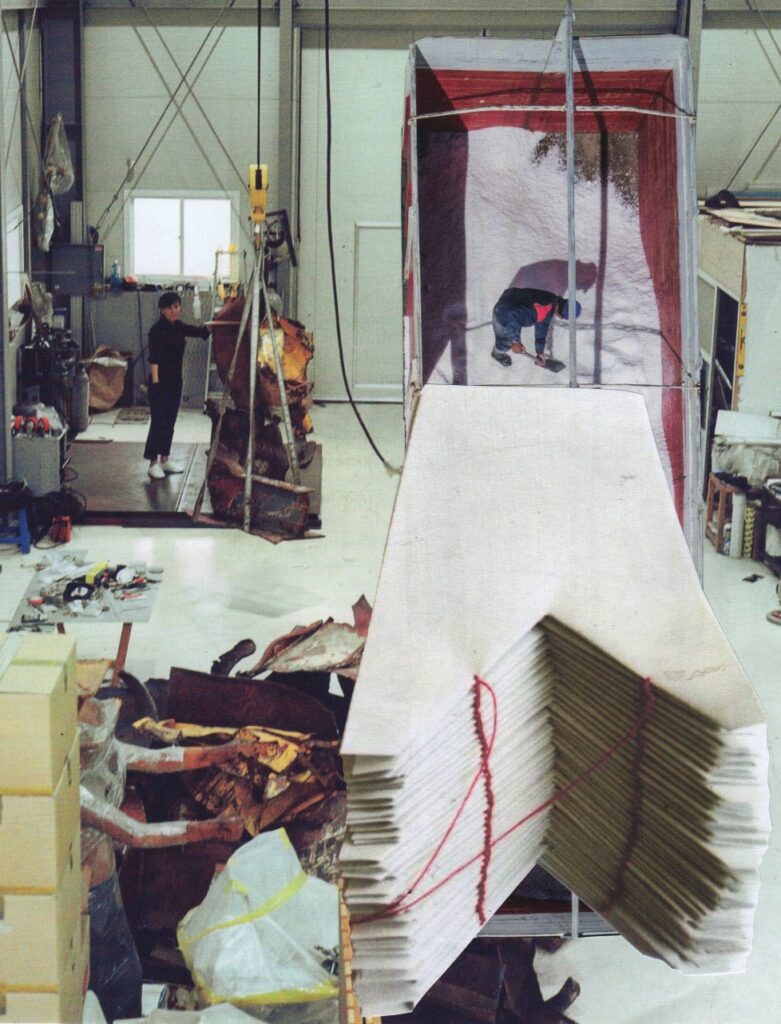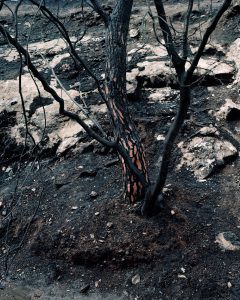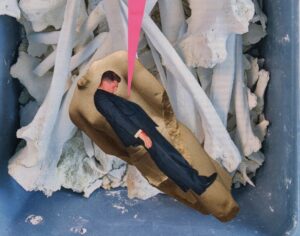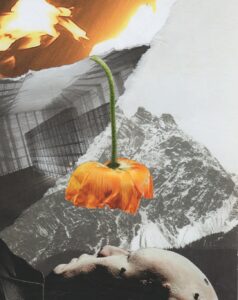I would like to take you back to my childhood. I was around five years old, sitting on a corner of my grandparents’ greenish sofa, in their living room. There was a warm breeze coming through the open door of the balcony, and the white curtain did that dance that fluids do, to embody the wind. There was laughter, new words and new voices. My grandparents had a couple of friends over; they were talking and gesturing, reminiscing about their younger years. I was the only child there and it felt like being part of some sort of an exquisite club. I was trying to follow the sounds that seemed to go round and round and fill up the space, and in this thrill I saw my grandfather looking at me. He paused for a moment that felt like one of those scenes in the movies where everything around you freezes for a while, and said: Well, all these stories happened before your time, when you were only alive in your parents’ letters. I carried that feeling with me throughout my life, that one instinctive reflexion which made me feel like I was part of a privileged club—the one that included those whose past started long before they were even born, the ones born in a conscious life. There was a time when I wasn’t here to fill this space, yet I was present through the nature of living things. My approach to art finds its roots here: I believe art is present through the nature of things and conditioned by it. One could decide to act upon it and give it a name, a face and a present time.
MAKING ART AS A DOCUMENTING PROCESS
The materialisation of an art piece is non-linear and it implies that the artist is both an observer and the object of his observation, through his way of experiencing life. My curiosity fuels the intermediate steps which help refine the initial spark and my hands ultimately fully bring it into the conscious mind, by giving it weight and form, by allowing it to fill a space.
Art becomes, in this framework, the most intimate documenting process of the artist’s existence—a process that unfolds in time, revealing its vibration to the artist himself by making him aware of the movements, the shapes and the sounds which lead to the finished piece.
By the time the last corner is being carefully folded and the work can finally be seen in its wholeness, rather than in its details, everything that it represents has already sunk into consciousness, mirroring the physical space filled by the artwork itself. From that point on, it maintains the role of the mirror, expressing the very part that has been revealed through months or years of courtship, dancing and free falling. If we follow this thought, we could imagine an artist’s lifework as a complex mirror installation that reflects all the angles of the self in countless shapes and ends up revealing a kaleidoscopic energy with an unrepeatable pattern.
Sometimes an insight—the initial spark—appears multiple times in my art journal, either on its own, by taking different shapes, or simply by recurring in larger contexts. These repetitions create depth by layering, and fulfil two apparently opposite roles: a protective and a revealing one. It’s the same as trying to find the safest place to keep a precious and dear object. Sometimes it needs to be lost, buried somewhere, in order to make sure you will end up finding it. In time, they form an intricate, pulsating archiving system which concludes in some way the continuous documentation process.
PLACE FOR AN ART WORK
There is at least one more process unfolding during documenting that takes place through the act of embodying art, the two being closely linked and dependant on each others’ progress: a space is being created. By gently allowing your mind to be present in the movements of the hands, by observing repetitive actions and seeing the object taking shape, the mind starts creating a space for it, slowly, in wave-like motions. This new space doesn’t replace or compress the pre-existing one – it’s a cumulative action, the act of creation takes place by adding complexity. This leads to another important theme present in my work: decrypting complexity through art.
I have a friend who knows my early work and has been following my process for a long time now. Every time she would see one of my pieces, she would imagine a bird. My belief is that she recognised the complexity and translated that feeling by the means of an instinctive way of adding a new dimension – in this case, the universe above our heads – the sky. First she saw the flight, then the object crystallised in the shape of a bird as a symbol of that action, leading to a starting point of a potential new perspective.
THE NATURE OF THE TRADE
One would be tempted to think that an art piece is being brought to the public’s attention as a finished object. In my view, an art piece is never finished: instead of a well-defined contour I am inclined towards observing its fluidity.
I wasn’t present in a conscious way in my grandparents’ past and I won’t be present in that way in my great-great-grandchildren’s future either. Yet, I am here now, contemplating that past and that future, recognising them as dimensions of my present. In the same way, I believe an art piece doesn’t have a beginning or an end—it travels through time, gaining its multiple, complex and intriguing dimensions by being observed, ignored, by being the object of love or anguish, by changing homes. I can only hope it will be a hell of a ride.
Written by LAURA MUNTEANU
Originally published SEPTEMBER 2018

Artwork by KATE HOLFORD
Photographs courtesy LAURA MUNTEANU
© Copyright for all texts published in Stillpoint Magazine are held by the authors thereof, and for all visual artworks by the visual artists thereof, effective from the year of publication. Stillpoint Magazine holds copyright to all additional images, branding, design and supplementary texts across stillpointmag.org as well as in additional social media profiles, digital platforms and print materials. All rights reserved.



